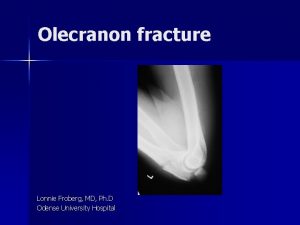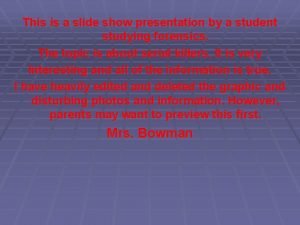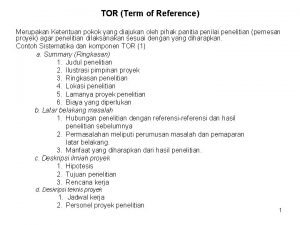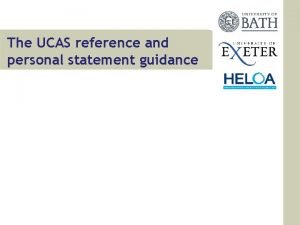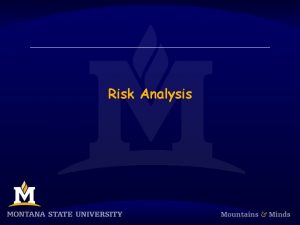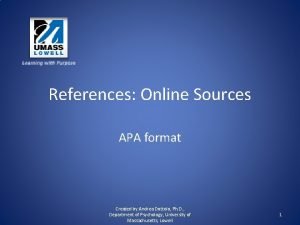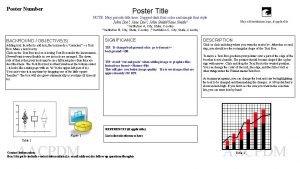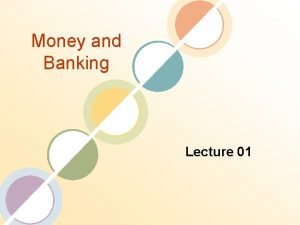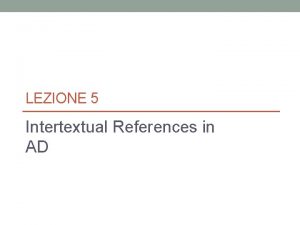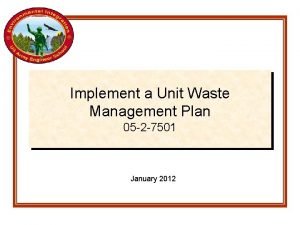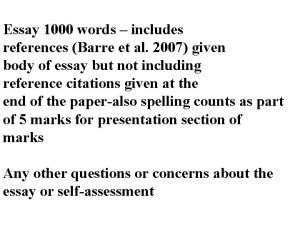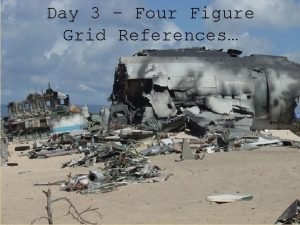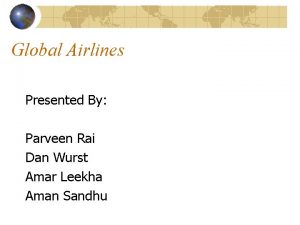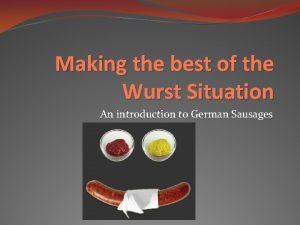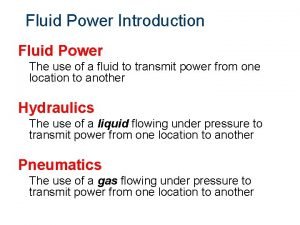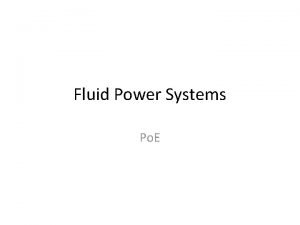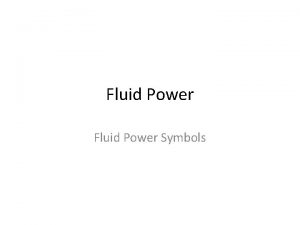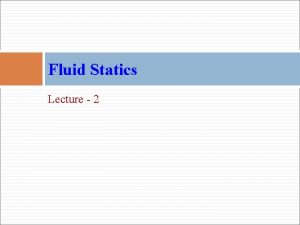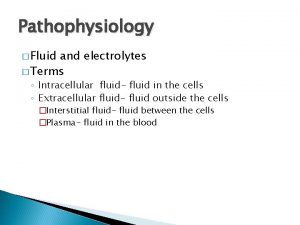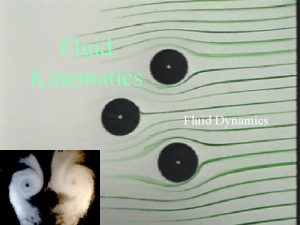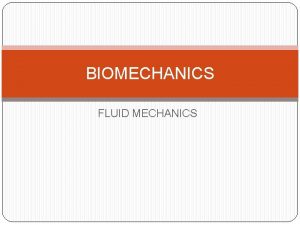Fluid power Presenter Lonnie Wurst NDSCS References Fluid






























- Slides: 30

Fluid power Presenter: Lonnie Wurst NDSCS


References • Fluid Power Systems; Patrick J. Klette, American Technical Publishers, Inc. ; 2010. • Navy Fluid Power; NAVEDTRA 14105; Naval Education and Training Professional Development and Technology Center; 1999. • Various Manufacturer’s supplements

Topics to be Discussed • Properties of Gases • Absolute Pressure and Temperature • Gas laws • Pascal’s Law • Force, Work, and Power • Pneumatic Cylinder Operation • Pneumatic System Sizing

GAS PROPERTIES • No shape- form to the shape of their container • No attraction between gas molecules- only interact through collision • Can be compressed • Pressure affected by volume of container and temperature

Pressure • Measurement of the rate of collision between gas molecules • Units include: • • Pounds/Square Inch (PSI) Atmospheres (ATM) Bar (BAR) Pascals/Kilopascals (Pa/Kpa)

Absolute Pressure • Found by adding gauge pressure with atmospheric pressure • Ex: If a gauge is reading 100 PSI, what is the absolute pressure? • Absolute pressure = gauge pressure + 14. 7 • 100 + 14. 7 = 114. 7 psia Gas Law Formulas use Absolute Temp. Values in Calculation.

Absolute Temperature • Measurement of actual molecular motion • Used in Gas Law Formulas • Absolute Zero- hypothetical temperature at which all molecular motion ceases • Uses Rankine Scale • To convert from Fahrenheit to Rankine: • Rankine = 460 + Fahrenheit • Ex: if a thermometer reads 100 F, what is the temp. in Rankine? • 460 + 100 = 560 R

Boyle’s Law • When a system temperature remains constant, there is an inverse relationship between pressure and volume • When pressure increases, volume decreases • Equations: • V 1*p 1=v 2*p 2 • V 1/v 2=p 2/p 1 • V 1=(p 2*v 2)/p 1 Volume = cubic inches Pressure = psia

Boyle’s Law • Example: If a gas volume of 4 cubic inches at 100 psig is allowed to expand to 6 cubic inches, what will the new pressure be?

Boyle’s Law • Example: If a gas volume of 4 cubic inches at 100 psig is allowed to expand to 6 cubic inches, what will the new pressure be? • Solution: • • V 1*p 1=v 2*p 2 P 2=(v 1*p 1)/v 2 P 2=4(100+14. 7)/6 P 2=76. 47 psia or 61. 77 psig

Charles’s Law • The volume of a gas is proportional to absolute temperature if constant pressure is maintained. • Temperature increases- Volume increases • Formulas: • V 2=(v 1*t 2)/t 1 or • V 1/v 2=t 1/t 2

Gay-Lussac’s Law • When a volume is held constant, pressure and temperature are directly related. • If temperature increases, pressure increases • Formulas: • P 2= (p 1*t 2)/t 1

Gay-Lussac’s Law • Example: A cylinder with 1800 psig at 70 F is left out in the sun and heats up to 130 F. What is the new cylinder pressure?

Gay-Lussac’s Law • Example: A gas cylinder at 1800 psig and 70 F is left out in the sun and heats up to 130 F. What is the new cylinder pressure? • Solution: • • P 2=(p 1*t 2)/t 1 P 2=(1800+14. 7)*(130+460)/(70+460) P 2=(1814. 7*590)/530 P 2= 2020 psia or 2005. 3 psig

Combined Gas Law • Also known as the General Gas Law • Combines Boyle’s, Charles’s, and Gay-Lussac’s laws • Covers all relationships between pressure, temperature, and volume • Formulas: • P 1*v 1*t 2=p 2*v 2*t 1 or • (p 1*v 1)/t 1=(p 2*v 2)/t 2

Combined Gas law • Example: Two cubic feet of a gas at 75 psig and 80 F are compressed to 1 cubic foot and then heated to 300 F. What is the new gauge pressure?

Combined Gas Law • Example: Two cubic feet of a gas at 75 psig and 80 F are compressed to 1 cubic foot and then heated to 300 F. What is the new gauge pressure? • Solution: • • • P 1*v 1*t 2=p 2*v 2*t 1 P 2=(p 1*v 1*t 2)/(v 2*t 1) P 2=(75+14. 7)*2*(760)/(1*540) P 2=(179. 4)*(760)/540 P 2=252. 5 psia or 237. 8 psig


Pascal’s Law • When a force is applied to a fluid in a closed container, the force is equally applied throughout the fluid. • Basis of operation for fluid power

Pascal’s Law • Fluid Power Triangle FORCE Pressure Area

Cylinder Operation • Pneumatic cylinders and other equipment are controlled by three factors: • Pressure • Force • Surface area

Surface Area •

Force • Product of pressure applied to piston face and surface area of piston face in a cylinder • F = P*A • Example: If 100 psi of pressure is applied to a 6 inch diameter air cylinder with a 1 inch diameter rod, what is the force generated during extension? During Retraction?

Force • Solution: • • • Extension: Piston side of cylinder = 0. 7854 * 36 = 28. 27 sq. in. Rod side of cylinder = 0. 7854 * 35 = 27. 49 sq. in. Force = P*A Piston side: force = 28. 27 x 100 = 2827 pounds Rod side: force = 27. 49 x 100 = 2749 pounds

Cylinder Force • Ways to increase cylinder force • Increase operating pressure • Increase surface area of cylinder

Cylinder Sizing • Determine weight of load, including any brackets/fixtures that are attached • Include angle of movement in weight calculation • Add extra force to increase speed • Usually add 50 -100% depending on desired speed • See Bimba Catalog

Cylinder Speed • Exact speed is extremely difficult to calculate • Many factors involved: • • • Air line sizing Cylinder port sizing Length of air lines Flow rate of valves/solenoids System pressure And many more…. .

Coefficient of Velocity • Labeled Cv • Used to measure a component’s ability to allow or resist flow • Higher value- higher ability to pass flow

So…What does this mean? • As a technician: • Need to be aware that designs are not the same between replacement parts • Similar looking parts may have different flow characteristics
 Thrill oriented killer
Thrill oriented killer Ccna kursus
Ccna kursus Lonnie bell orange county
Lonnie bell orange county Steven tuomi,
Steven tuomi, Lonnie trumbull
Lonnie trumbull Draw the power triangle
Draw the power triangle Viscoseal
Viscoseal P1-p2
P1-p2 Fluid statics deals with fluid at rest
Fluid statics deals with fluid at rest Transcellular fluid
Transcellular fluid Ecf icf and interstitial fluid
Ecf icf and interstitial fluid Interstitial fluid vs extracellular fluid
Interstitial fluid vs extracellular fluid Fluid mechanics chapter 4
Fluid mechanics chapter 4 Movement of body fluids
Movement of body fluids Perihepatic ascites treatment
Perihepatic ascites treatment Cv reference
Cv reference Contoh tor
Contoh tor Personal statement reference
Personal statement reference References for risk management
References for risk management References apa format
References apa format How to put references on a poster
How to put references on a poster Reference of money
Reference of money The difference between reference and bibliography
The difference between reference and bibliography Examples of intertext
Examples of intertext What is a ambiguous pronoun
What is a ambiguous pronoun Waste management references
Waste management references Ibm customer references
Ibm customer references How many references for 1000 words
How many references for 1000 words Grid references
Grid references Reference words examples
Reference words examples Contextual reference
Contextual reference

